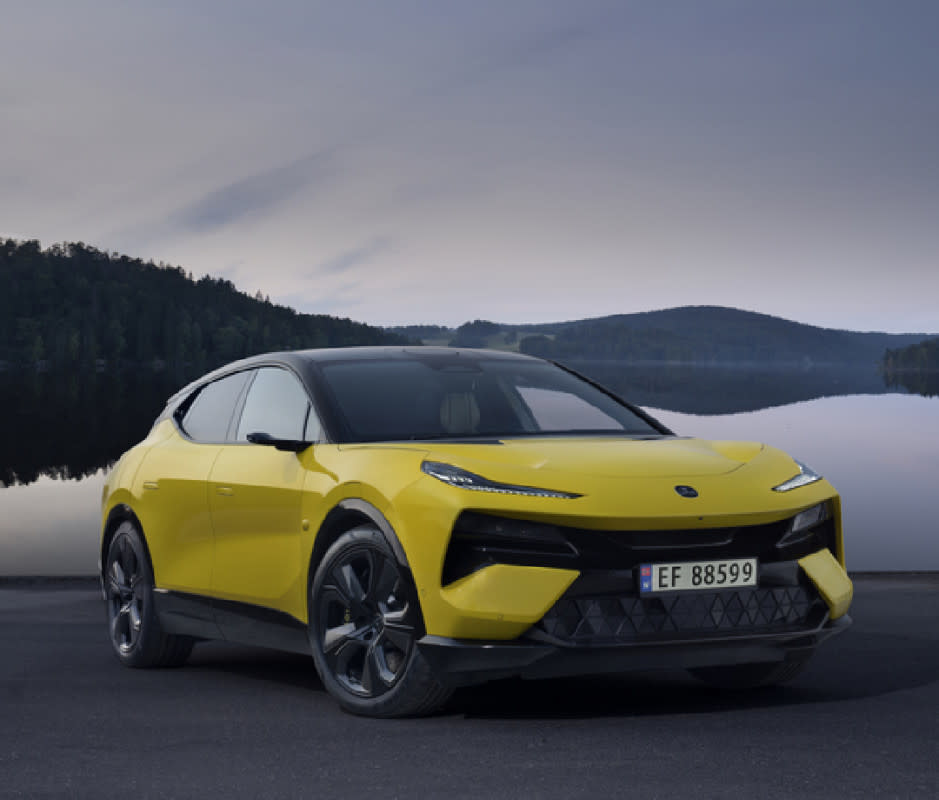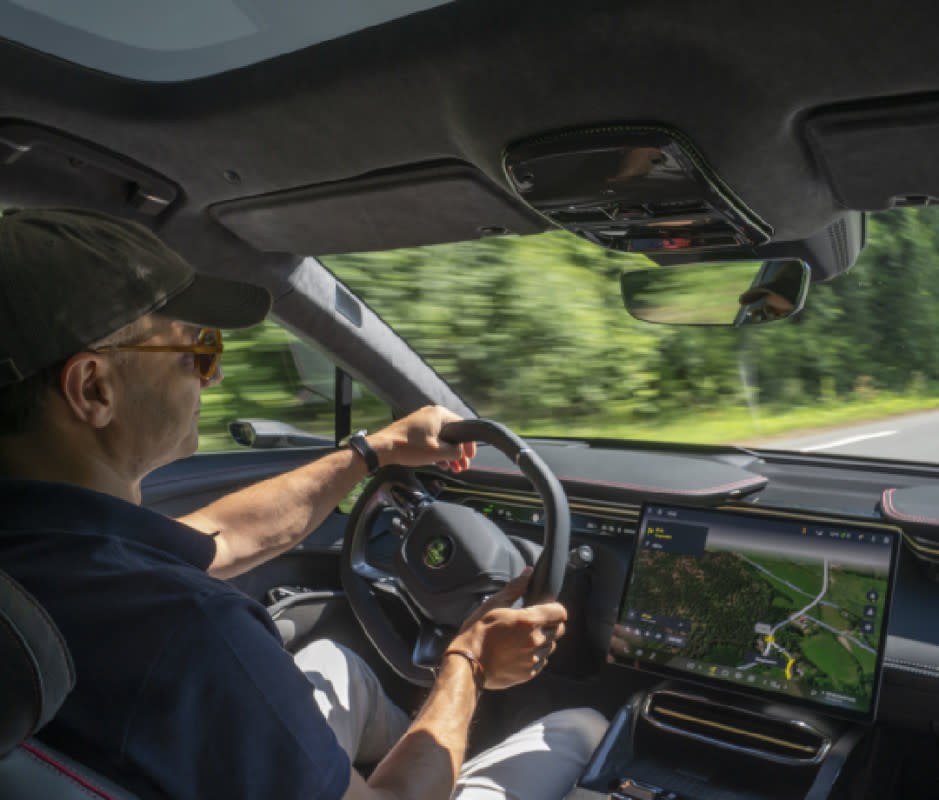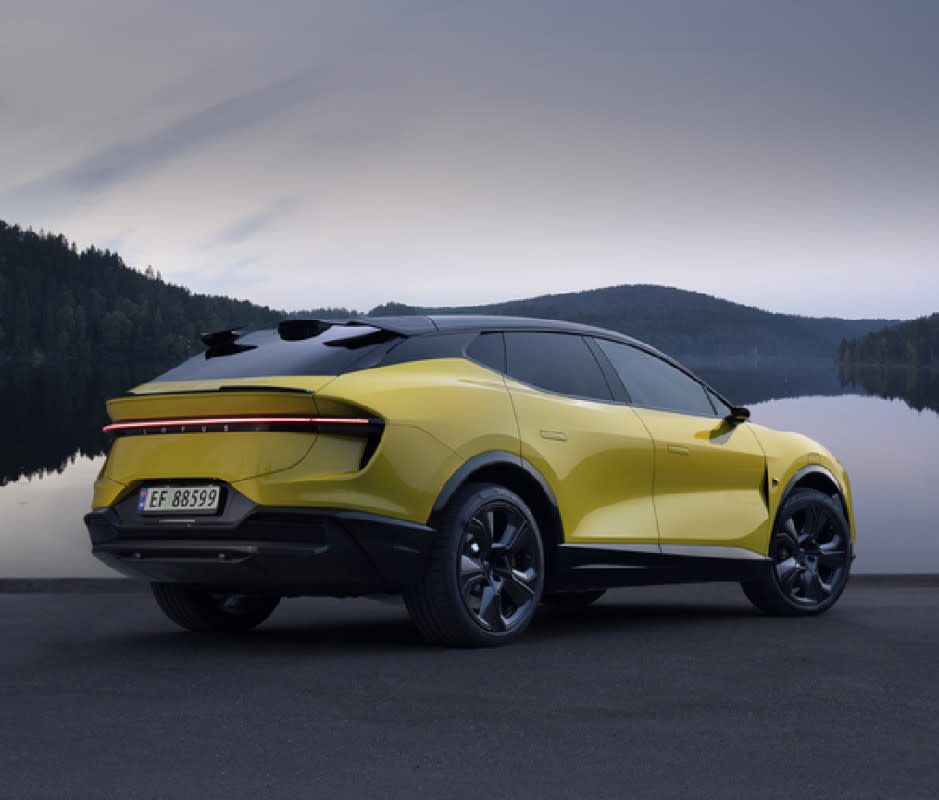First Drive: The Lotus Eletre Is a Powerful Shock to the System
- Oops!Something went wrong.Please try again later.
- Oops!Something went wrong.Please try again later.
Colin Chapman—the founder of iconic racing car company Lotus—was one of those salty automotive souls who tirelessly proselytized about weight savings. Known for now-clichéd chestnuts like, “Simplify, then add lightness,” Chapman built an empire of race and road cars under the Lotus nameplate that prioritized extreme lightening—sometimes to a fault.
I would know. During a track event at Road Atlanta a few years ago, I drove a Lotus Exige over a seemingly innocuous rumble strip that snapped its spindly suspension arm and sent the petite sports car spinning like a toy. Racer Jochen Rindt once called out his broken confidence in the lightness-at-almost-any-cost ethos in a letter to Chapman, saying, “Honestly, your cars are so quick that we would still be competitive with a few extra pounds used to make the weak parts stronger.” I felt the wrath of that sentiment to a T as I waited for me and my broken Exige to get dragged off the track and away to safety.

Courtesy Image
Embracing the EV Future
Chapman’s reputation lives on among the diehards, as does Lotus—despite years of near-bankruptcy and multiple ownerships. And while the brand’s track-obsessed past has been sustained by recent gas-burning models like the Evora and Emira, the future lies squarely in a different direction: electrification, specifically in the aptly named Eletre.
The motoring cognoscenti have been quick to dismiss the Eletre crossover as a blasphemous sellout that is making Colin Chapman spin frightfully fast in his grave. They may have a point, particularly because Chapman bit the dust way back in 1982, a moment in time when the gas crisis of the late 1970s was all but forgotten and internal combustion ruled supreme. But what I learned about the Lotus Eletre after two days of driving in EV-friendly Norway reveals onion layers of future-forward thinking that defies Chapman’s monotone messages of the past.
Related: You Can Thank Electric Cars for Killing Horsepower
For starters, the Lotus Eletre’s design language, whether you love it or loathe it, is a dramatic departure from the battery-powered herd. Flowing and futuristic, Eletre’s lengthy outside lines embrace the practice of what aerodynamicists call "porosity." From six shuttered triangular panels on the front grille which automatically open to let air through to arches and pass-through areas in the hood, wheel well, and other body parts, Eletre achieves a very slippery aerodynamic drag coefficient of .26. While official EPA numbers have yet to be released, Lotus's first mass market EV (the brand's $2.3 million Evija hypercar released in 2019 is one of the world's fastest electric vehicles) should get over 310 miles of range from a full charge of the 109 kWh lithium-ion battery powering the base and S models, which produce 603 horsepower. While the Eletre R model churns a mammoth 905 horsepower which can shoot it to 62 mph in under 3 seconds, that hot rod achieves less range than the less powerful version.

Basem Wasef
A Spark of Luxury
Inside the Eletre is a leather and Alcantara-lined cabin that feels spacious and contemporary, with a massive overhead glass roof, a 15.1-inch OLED touchscreen, and discreetly recessed controls for everything from the gear shift paddle to the climate control toggles. There’s a feeling of opulence to the soft touch nappa leather and tightly stitched Alcantara, while the swoopy contouring of the interior panels echoes the shape of the exterior. Rounding out the cabin is a remarkable sounding 23 speaker, 2,160-watt sound system by KEF with Dolby Atmos surround.
While Eletre’s interior steps Lotus up to luxurious heights the brand has not seen before, the true test of the brand comes from behind the wheel. Spoiler alert: it’s all but impossible to get equivalent steering feel in the 5,555-pound entry models or the nearly three-ton R version when compared to the featherweight Lotus sports cars of yore. But here’s the thing: when you’re driving an entirely new vehicle that espouses a different design philosophy and reason for being, the experience can be so foreign it’s like learning another language.
That said, during frisky but not overly aggressive driving, the 603-horsepower Eletre feels robust and capable, though not quite as rocket-like as some of the more generously endowed EVs from BMW, Lucid, Mercedes-AMG, or Tesla. Smooth and refined, the Eletre takes on a more mature, planted feel in contrast to past sports cars which had the tendency to be skittish and fragile. Brief time in the hyper-powerful R version at an airfield reveals vastly more power and a noticeable kick between gears from the 2-speed transmission, launching from highway speeds to illegal velocities with a palpable push.
Related: First Drive: The Lotus Emira Is a Stunning Mini Supercar
While the spirit of the more powerful R version leapfrogs into a significantly higher level of performance, I’m not sure that makes it more Lotus. In fact, I’m not sure either of these strains are tapping into the brand's decades-old DNA. Instead, what we’re seeing here is a whole new breed of Lotus, a freak biological life form that has emerged from a primordial goop of environmentally based government initiatives, the curious contemporary landscape of ultra-high-powered SUVs, and the global worldview of the brand’s Hangzhou-based corporate owners, Geely.

Courtesy Image
The Eletre may be quite a bit more physically robust than the delicately thin Lotuses of the past, which can be a good thing if you don’t like cars that break when they’re supposed to be getting you from A to B on a road or a track. If a departure from the past is the tradeoff we must make for Lotus’s survival, embracing inscrutable luxury just might be the secret sauce that ensures the future of this remarkable brand.

